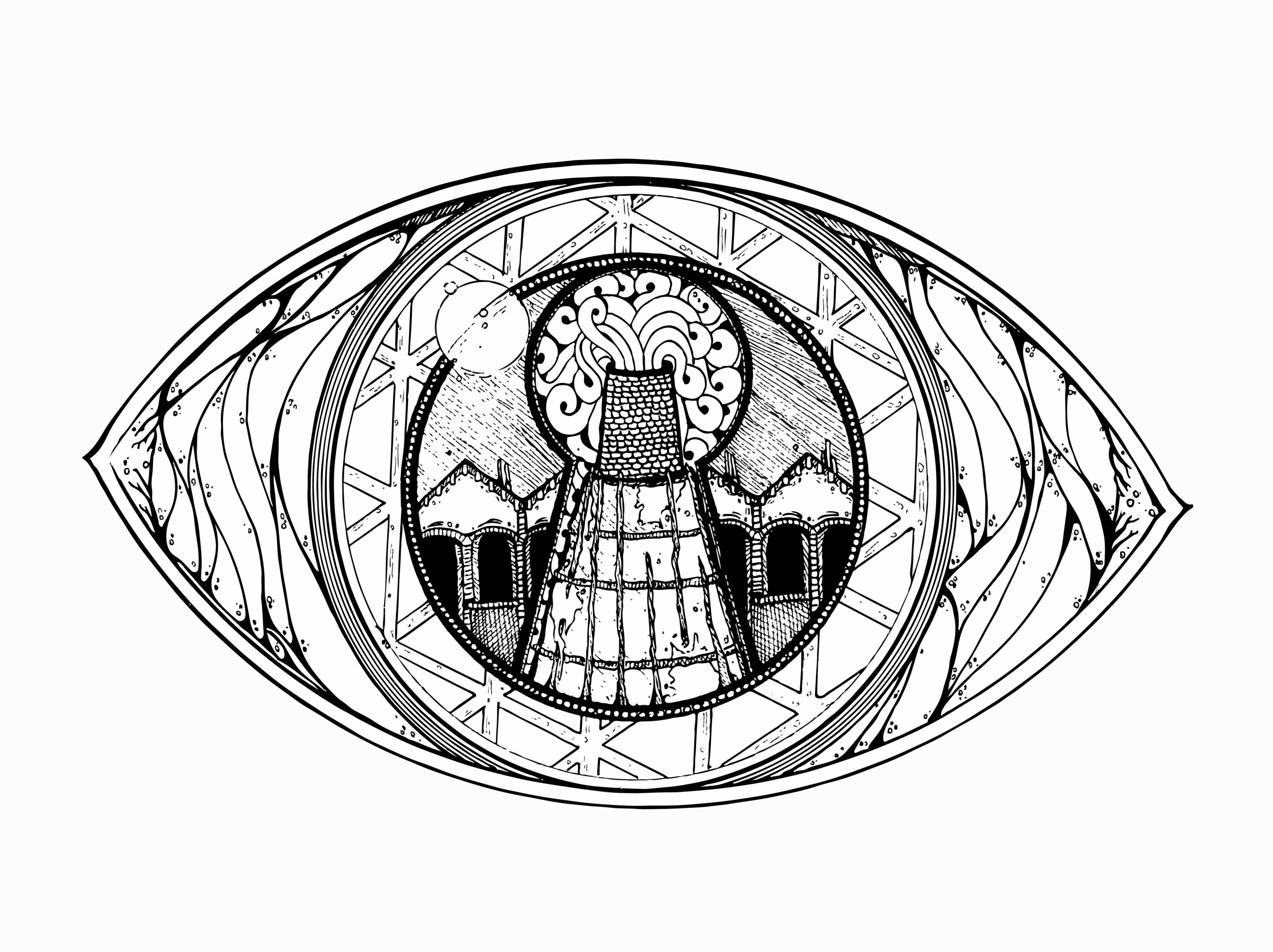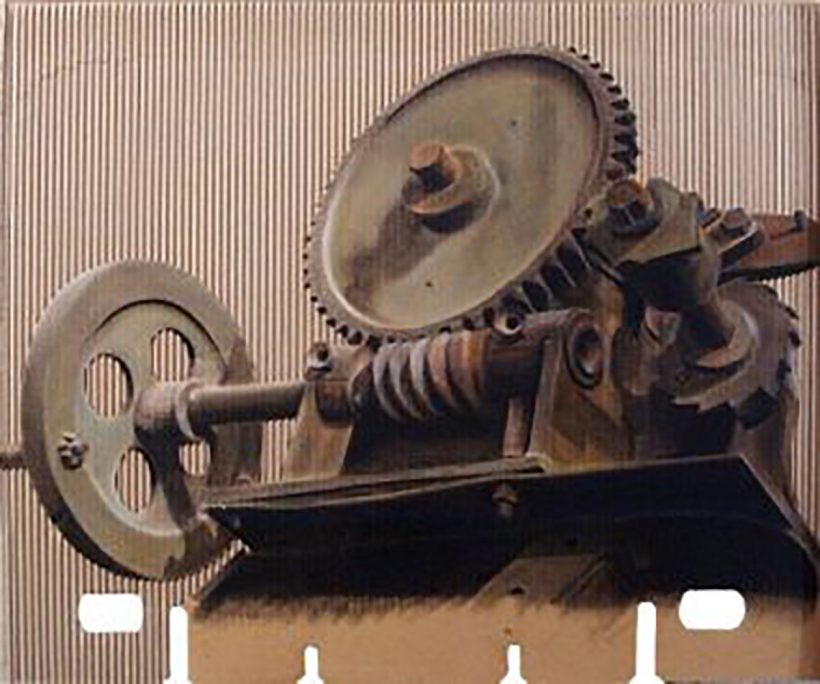Interview with Mariella Segala, curator of the exhibition entitled “The rust garden” hosting the artworks of Gianfranco Gentile and set in Spazio Arte Duina (Lonato del Garda – BS).
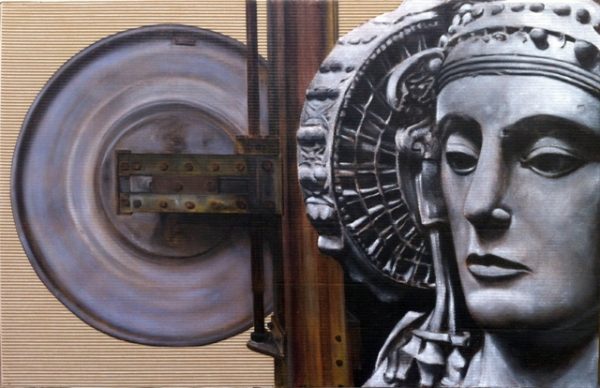
Pastelli su cartone da imballo. 95x151cm
F: How was the idea of this exhibition originated?
M: Since five years Spazio Arte Duina has been dealing with the realization of exhibitions, considering art as authentic and still anchored in the idea of research and beauty. The first exhibition we realized in the previous location (2011) included a selection of artworks of artists we believed to be coherent with our research. Among those artworks, we exhibit the one of Gianfranco Gentile. Since last year Spazio Arte Duina’s headquarters moved to Lonato del Garda, in an eighteenth-century farmstead.
The architectural building represents the efforts of the men who had contributed to his creation, also understandable by his stony walls and his handmade cotto tiles. Furthermore, it’s a place full of memories, history and strength.
In a context like this one, the Gianfranco Gentile’s artworks seem to be suitable because his discoveries and abandoned architectures are permeated with the presence of history. In other words, they are a proof of the past presence of the human beings who had lived and dwelt there.

Pastelli su cartone da imballo, 150×150 cm.
F: At the beginning of both the genus Homo and our relation with nature, there were two gardens: the biblical one of Eden and the Greek one of Eliseo. The idea of a perfect garden has been historically expressed in different ways. “The rust garden” ideally launch us in a new landscape dimension. Which one?
M: Garden is full of meaning and is suited to different interpretation in the history of art. The title “The rust garden” comes from the idea of a secret and private garden, a sort of Hortus Conclusus (meaning literally “enclosed garden”) that causes astonishment and surprise as soon as you cross the entrance of the art gallery.
It seems that mechanisms, machineries, ducts and abandoned gear wheels can change their purpose through the careful look of an artist. They are no longer simple, inert and obsolete objects but they have become almost living creatures that blossom on fragile cardboard supports.
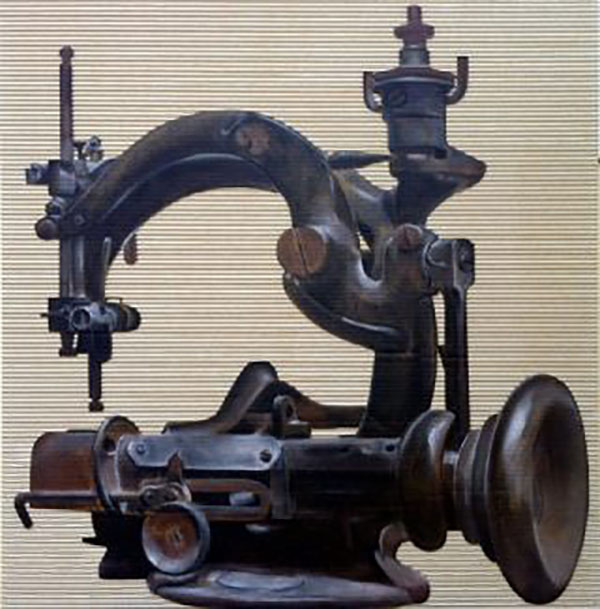
F: How is the industrial archeology of Gentile?
M: In Gentile’s industrial archeology – due to his training as architect – emerges both the purely artistic aspect and the most rational and methodical one. Observing the works of Gianfranco Gentile, you are caught in something that seems a nostalgic operation. Moreover, it comes to mind the late 19th century industrialization and the early 20th century one and the journal entitled “Civiltà delle macchine” (during the mid-20th century). The artist concentrates on the aesthetic value of past technical structures, allowing to emerge the latent sensuality and the intrinsic beauty of machineries. This idea poles apart in respect to the modernist exaltation of machine’s power. Through the irresistible charm for details focused by a lens-shaped perspective, the artist discovers again the seducing power of a mechanization still controlled by a man in an era where there was a workman that started the engine by hand, maneuvered the instruments, turned down levers, fixed tap, screwed bolts, rotated cranks, pressed switches, verified the materials.
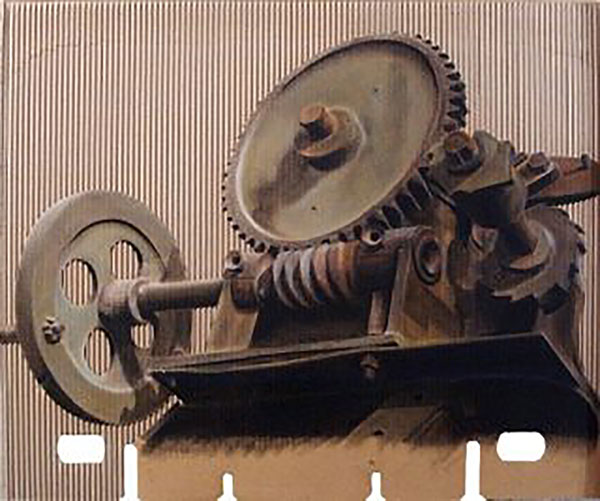
F: It’s possible to visit the exhibition since some weeks. How do public respond to it?
M: The public became very curious both for the theme’s originality (actually not many people know industrial archeology) and the technique used by the artist. The artworks were drawn on a common corrugated fiberboard used for packaging, painted by hand on the smooth surface with pastel and mixed techniques (oxides, varnishes, cement, tar and oil painting). After, he carved the unpainted area with a box cutter in order to let the inner part and the outline’s device emerge with extraordinary power and a three-dimensional effect. However, some Gentile’s artworks stroke visitors because they combine elements of classical archeology with the ones of industrial archeology.
F: What is the message he would address to the ones who don’t know industrial archeology yet?
M: Industrial archeology is as beauty as the classical one: it’s a word full of history and culture, testimonies of a quite passed era that need to be protected and rediscovered. I have recently found out the existence of a factory that produced springs in San Felice del Benaco designed by the architect Vittoriano Viganò, a fine and important location for industrial archeology; unfortunately, nowadays it’s not possible to visit it. It could be wonderful to make it accessible during particular events aiming to divulge this cultural heritage whereof Italy is full of.
Now, all we can do is let us be catched by the artworks of this artist hosted in Spazio Arte Duina until 15th June 2016. Don’t miss this opportunity!
A heartfelt thanks to Mariella Segala for her helpfulness and kindness.
Federica Taddeo.
Translated by Andrea Consalvi.
Ph credit: Spazio Arte Duina
